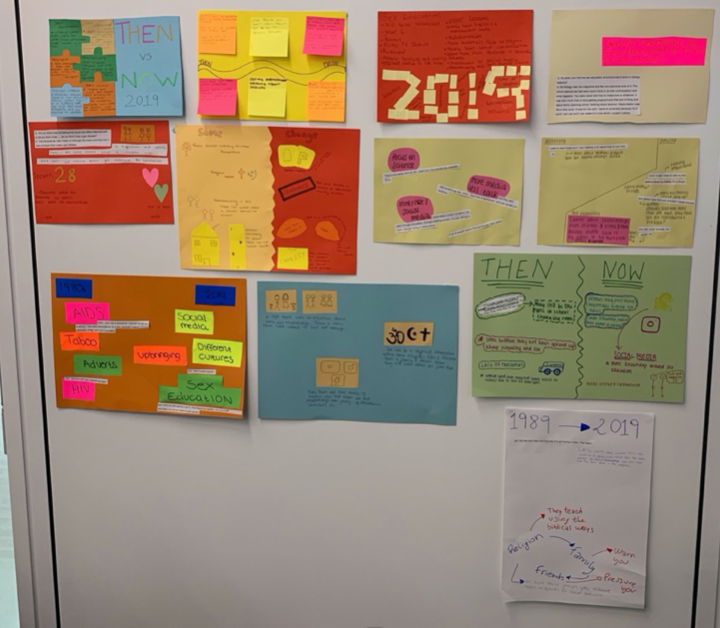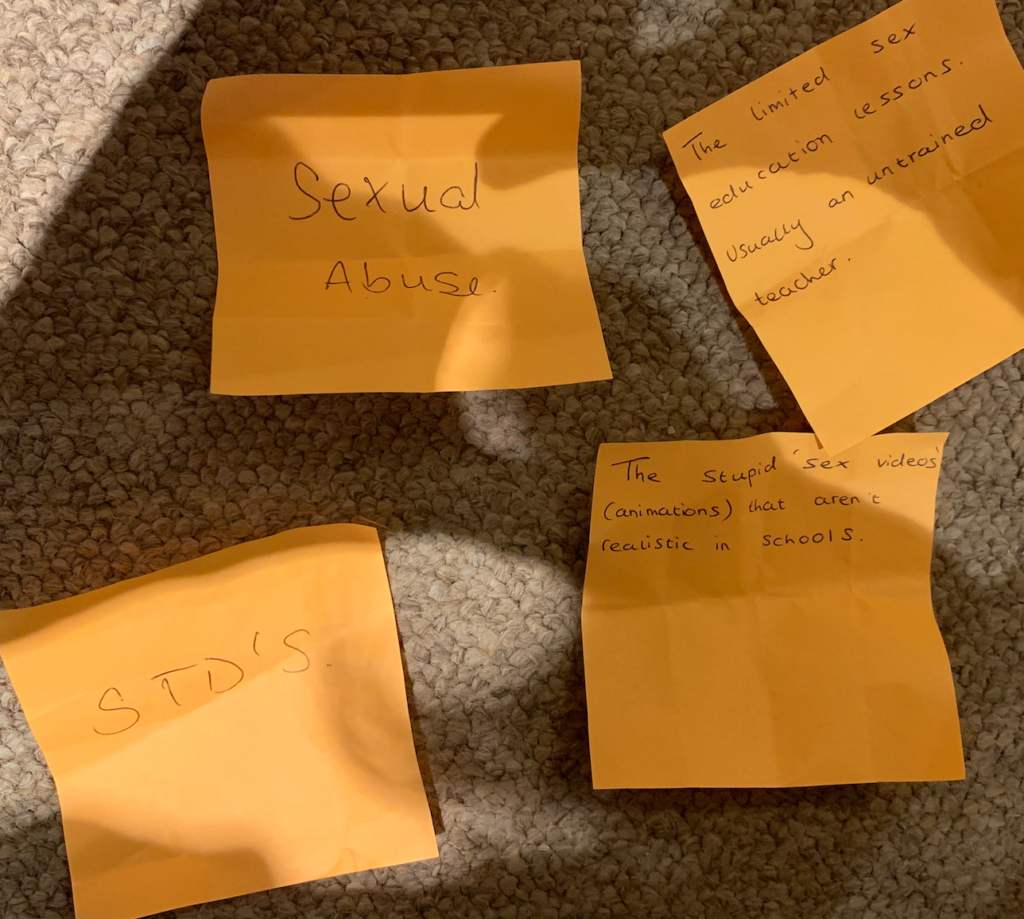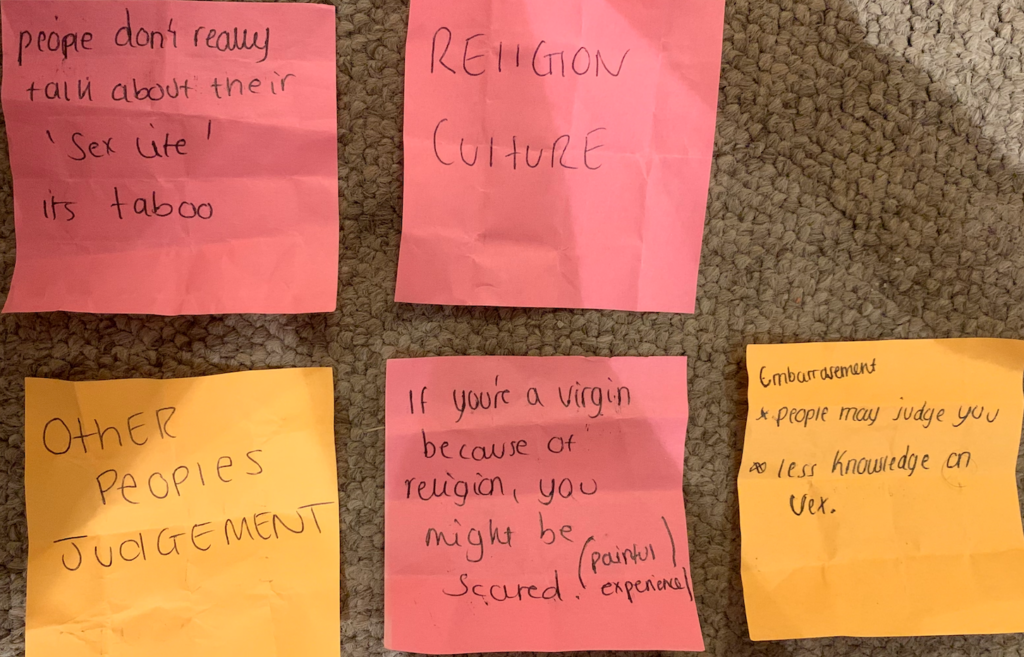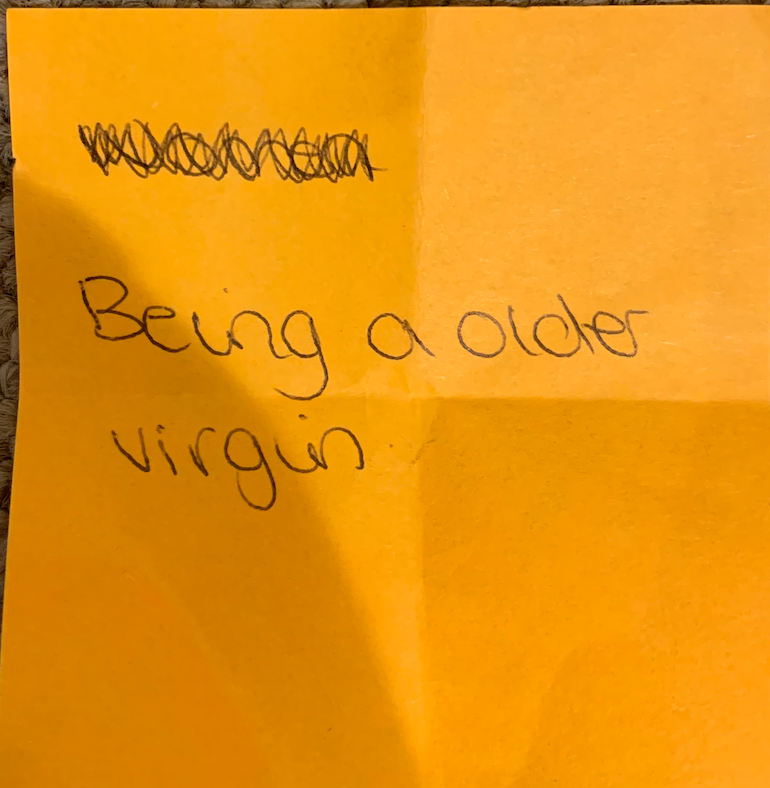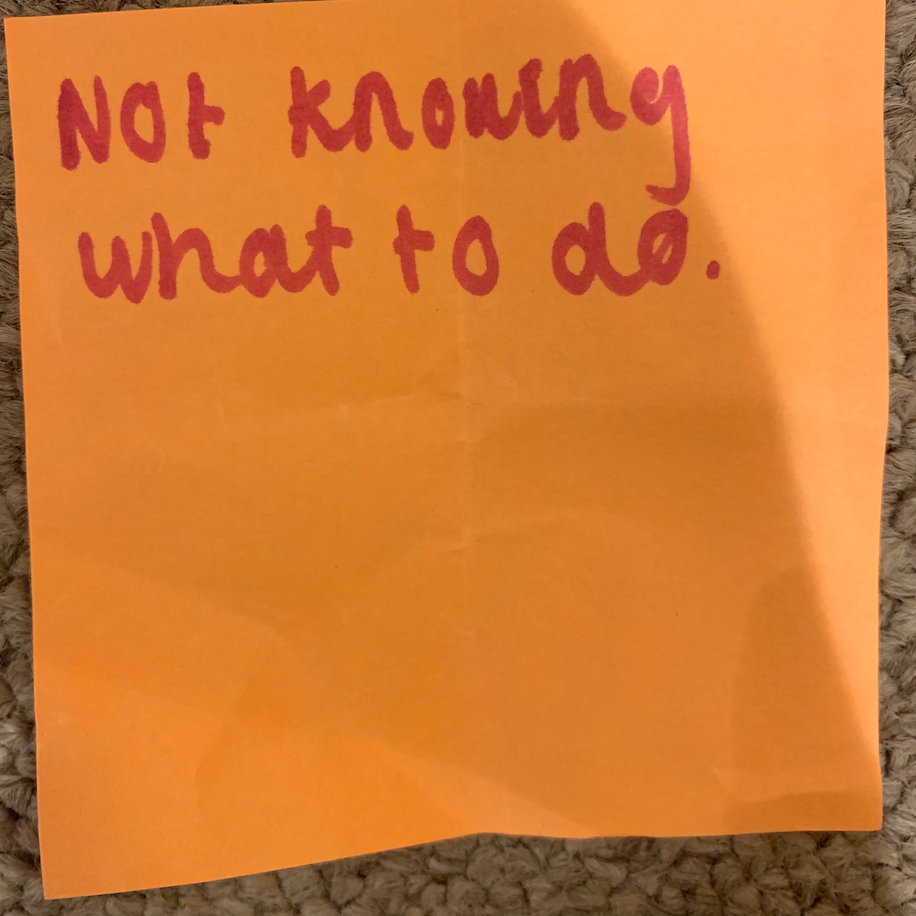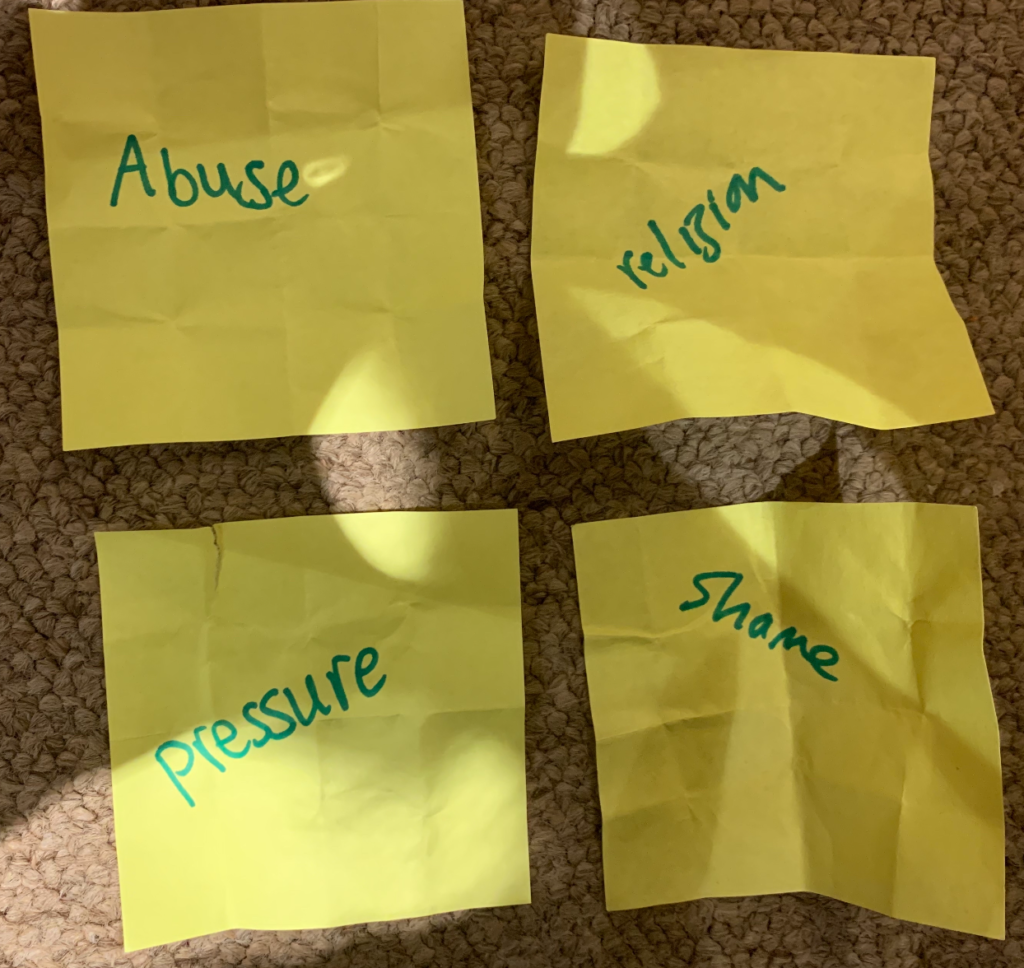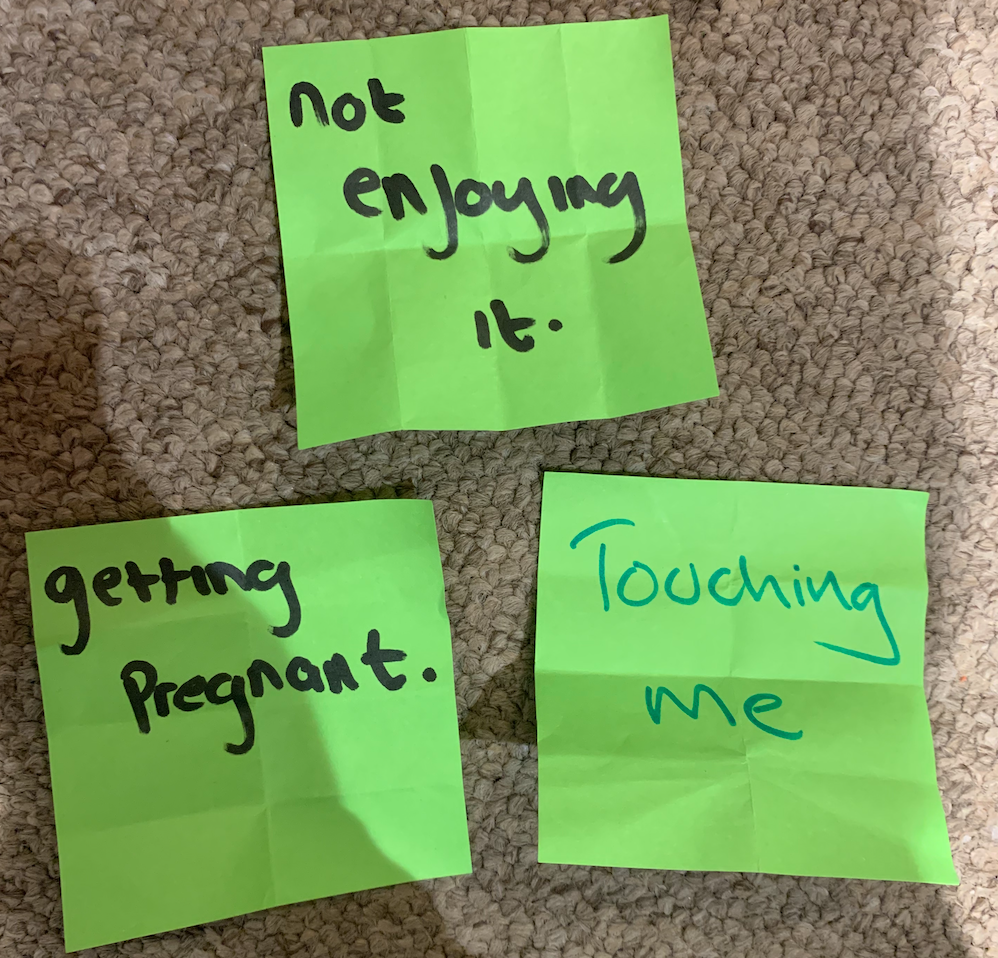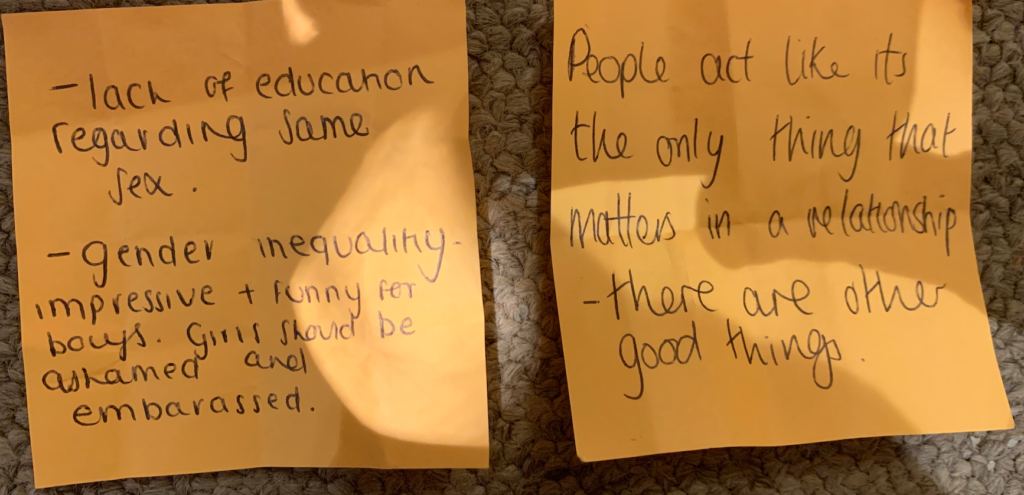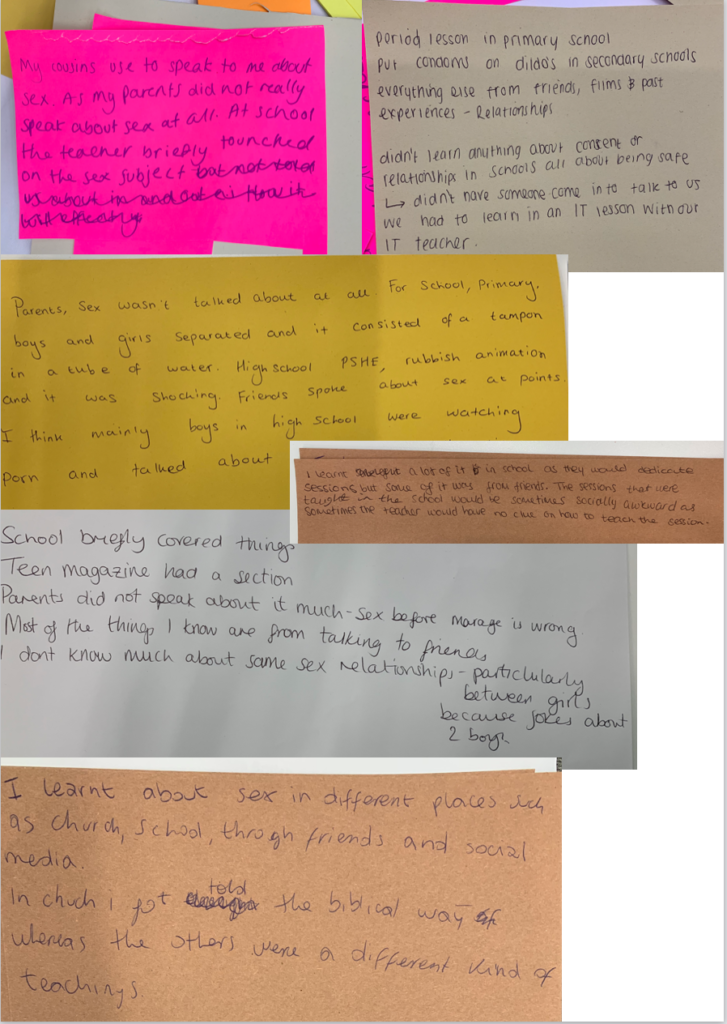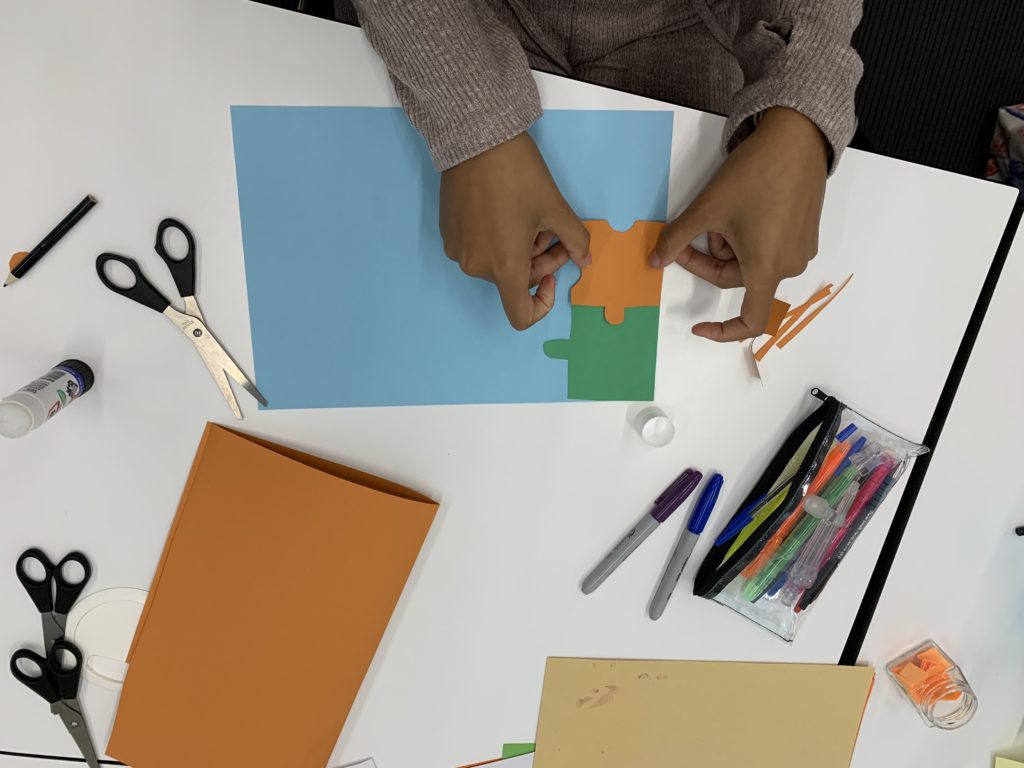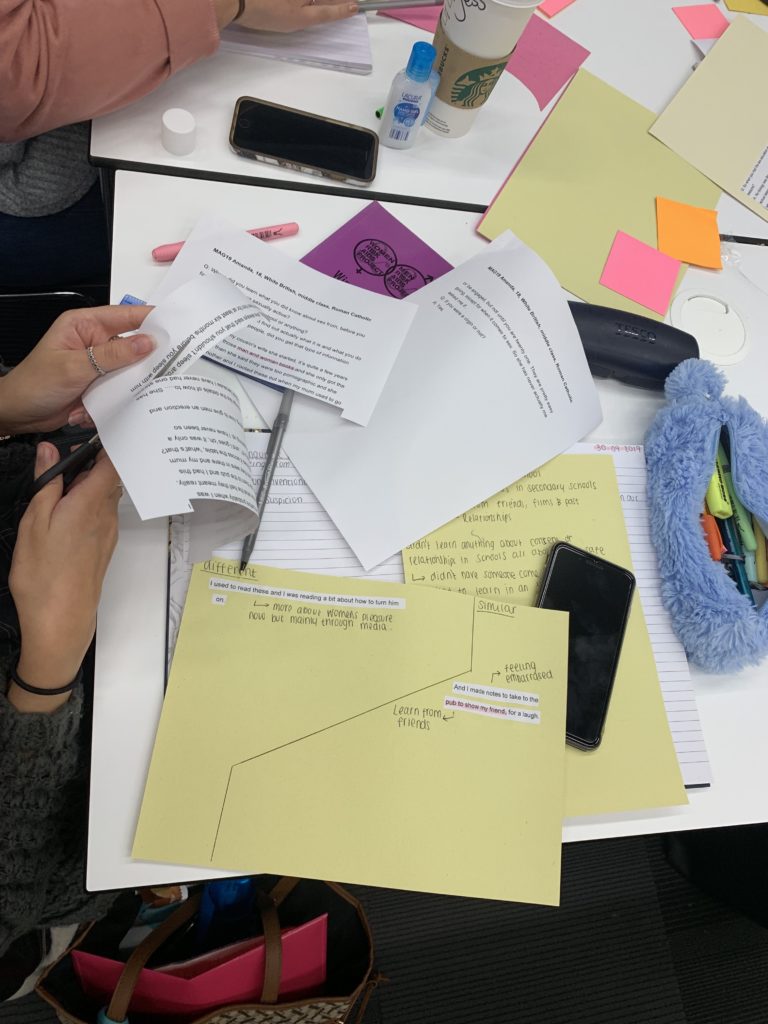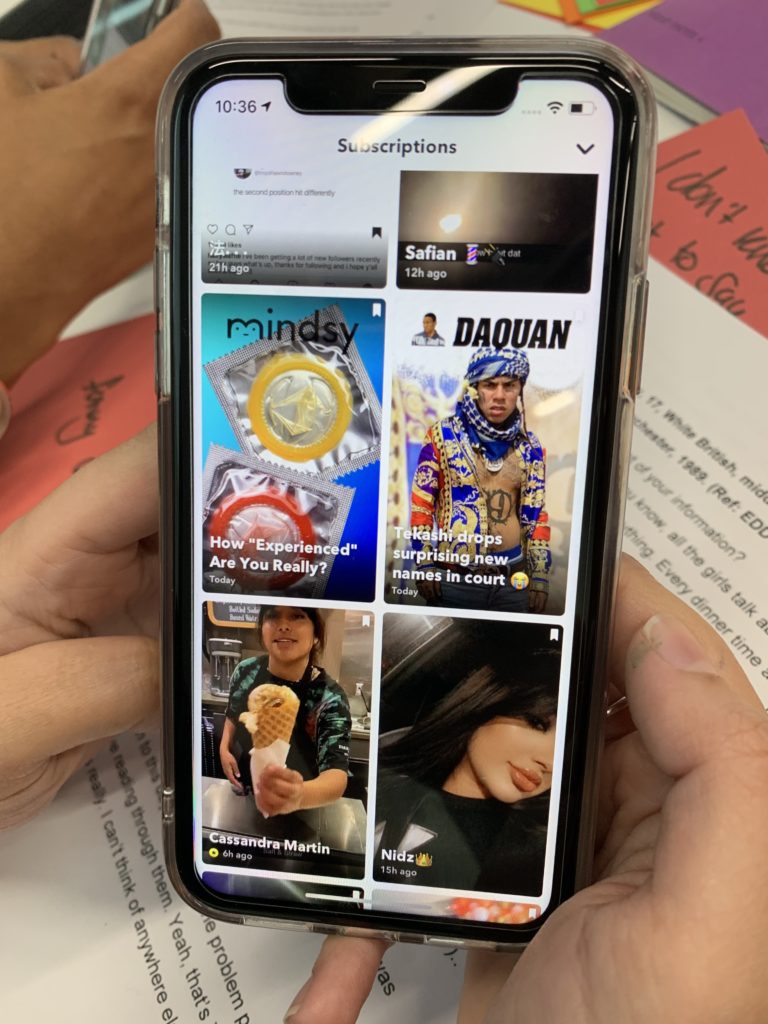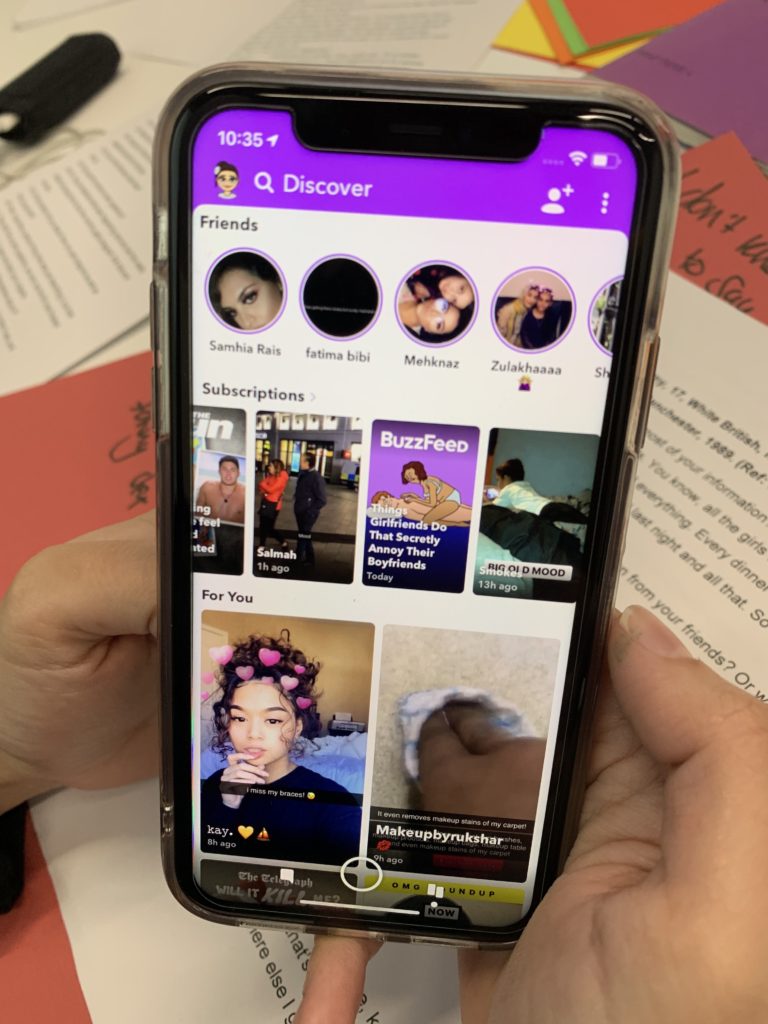A few weeks ago we posted a blog by Charlotte Bagnall who shared how she and her colleague had used data from the WRAP archive as teaching materials for a series of sessions on thematic data analysis. Since Charlotte and Claire delivered these sessions, Corona Virus has arrived in the UK. We are in lockdown and educators across all sectors are working out how to facilitate teaching and learning online and from a distance. In these unfamiliar times we are realising that digital archives of sociological studies, like the WRAP, offer new possibilities for students and educators who want to research, teach and learn during lockdown. There are possibilities for students to do secondary data analysis, comparative historical work and data reanimation and possibilities for educators who may want to use the data, as Claire and Charlotte did, to guide students through more structured programmes of learning about research methods, feminist sociological research, sexuality studies, creative methods, Relationships and Sexuality education and much more. With this in mind we are sharing details of a session we ran in September last year with a group of students at Manchester Metropolitan University, when we had never heard of Corona virus and could sit and talk, learn, think and create together. In the session we used collaging as a method for engaging with and exploring the WRAP data and thinking about sexuality and social change. Although this was an offline, group session its simple creative methods of reflect, free-write, read, think, stick, paste and share could be transferable to different spaces and contexts.
Collaging sexual learning
On the 30th September 2019 lecturer and former youth worker Jayne Mugglestone, Ali Ronan and I facilitated a workshop for third year undergrad students studying on an Early Years and Childhood Studies programme undergraduate programme at MMU. Ali and I met Jayne early in the morning in the teaching room to set up for the session. Jayne had been feeling concerned that our decision to do a workshop on sexualities in week two of the module was not a good idea. In week two students wouldn’t know her, or each other, very well or have got used to working together as a group. The previous week Jayne had introduced the topic and let students know what would be happening. A few of the students had come to talk to her after the session to say that they were concerned about the topic, because of their religious values – some Christian, some Muslim. Jayne was feeling nervous about doing the workshop and concerned that some of the students wouldn’t turn up. This mirrored the nervousness of another of the youth workers we have worked with in this project who was concerned about how the young women in her group – from ‘strict’ Muslim and Christian backgrounds – would respond to the WRAP material. As we were setting up for the session however some of the students who had approached Jayne the previous week turned up and she could relax.
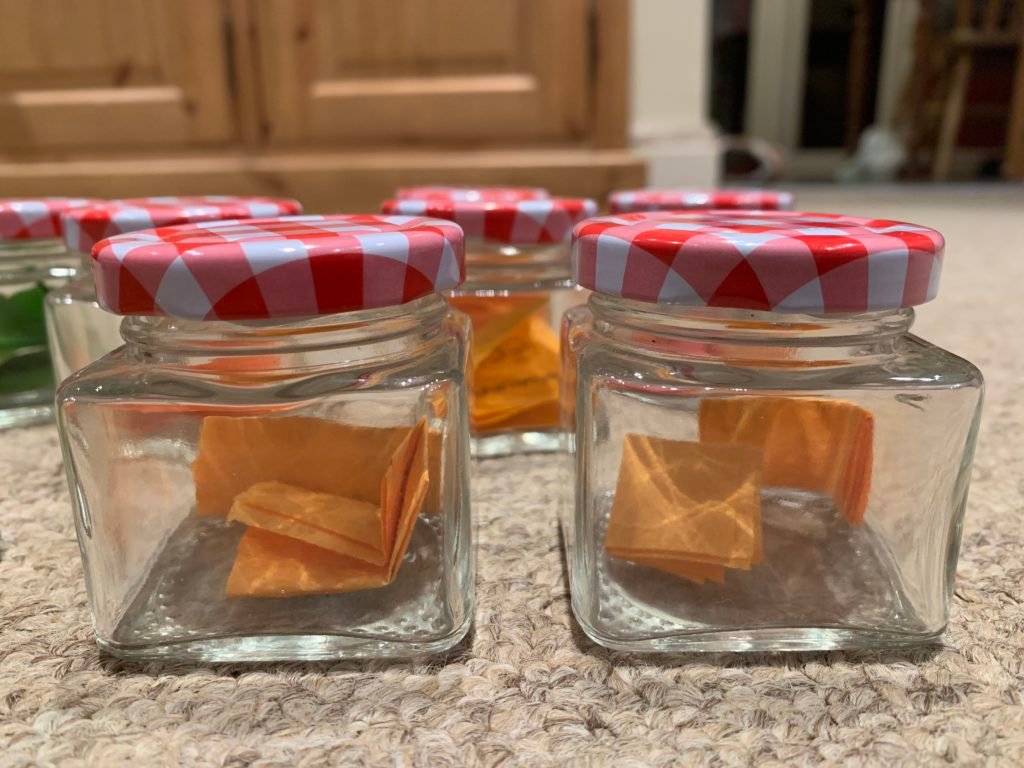
What jars you?
We started with an activity called What Jars you? (Taken from the AGENDA resource created by Emma Renold). We hadn’t planned to do this but decided to as Jayne noted some nervousness the previous week about talking about sexuality. The task was to write ‘what jars you about talking about sex and sexuality’ on post it notes and stuff these into a jar. There weren’t enough jars so the students had to share. This was a large group of over twenty students – all female except one and all born between 1997 and 1999 (We know this because our intro-starter involved talking about the year you were born!). The group is mixed in terms of race and ethnicity.
I went round and spoke to two tables at this point. At the first table the students told me that nothing jars them. They said they are very open about the topic and they are happy to talk about it. They talked about the importance of RSE and of talking about these issues both as students and young people and as future youth and childcare practitioners. On the other table two of the girls talked about the fact that they don’t talk about sex and sexuality at home or with friends. The silence around sex and sexuality was referred to in relation to upbringing and family. It took a while for us to name culture and religion as important factors. There was reference to the protests in Birmingham at the time around the teaching of LGBT relationships to Muslim children. I wasn’t quite clear if these were evoked as an example of why its difficult to have these conversations or as a polite message to me that we shouldn’t really be having these conversations anyway.
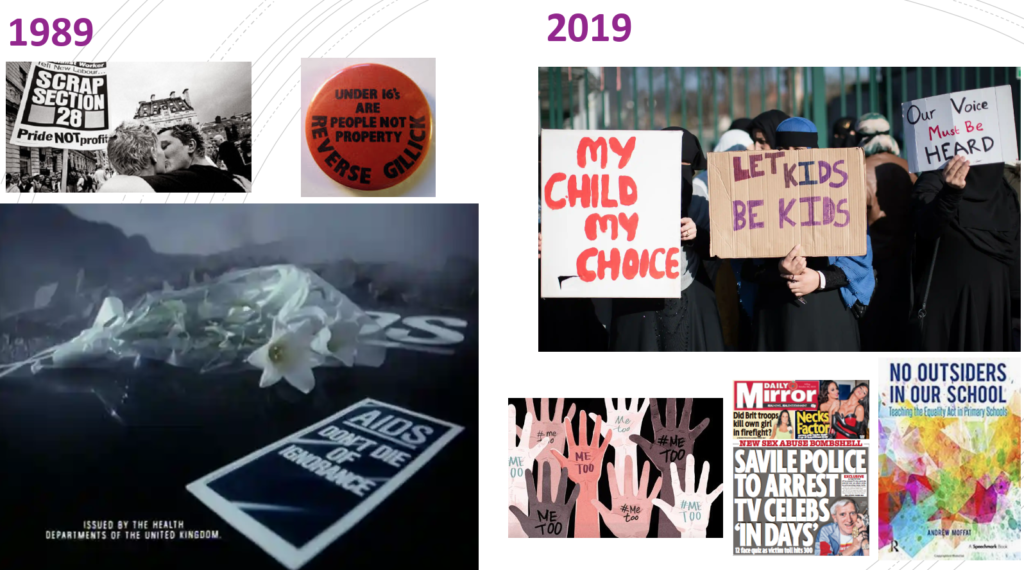
Students weren’t asked to share the contents of their jars. They could choose to take their jars with them or leave them on the tables if they were happy for us to read their contents. Most, if not all, left them. I read them after the workshop, expecting to find examples of what the students find difficult about talking about sex and sexuality in a classroom or professional context (as this was the context of our conversation prior to the activity). Students took up the activity in a different way, sharing examples of their own fears and concerns about sex and sexuality – their own ignorance, experience of abuse and fears of being touched, not enjoying sex or of getting pregnant. They also wrote what jars them about the politics of sexuality – the lack of education, social taboos around sex, restrictive religious and cultural norms, gender inequality.
We used young people’s reflections on the activity, and what they find jarring about sex and sexuality to think about how we were going to create a safe space for working. We created a set of ground rules and talked about confidentiality and how we were documenting the session that day.
For Jayne this activity opened up thinking about what support childhood and youth practitioners need before they can go out and deliver RSE.
‘We expect people to go and work with young people/all ages, in different roles – teachers, community workers, family support, etc. and support them around RSE subjects and issues when they have had no information or support themselves. It’s challenge as there is so little space even in our quite open curriculum to work on this kind of thing. The rooms, the group sizes, the course fees and related pressure on assessment and jobs, all gets the focus and the students themselves get missed in it all.’
Jayne Mugglestone, Lecturer and youth worker
Partner discussion and individual free write
We started the creative work by asking students to talk to a partner about how and what they learnt about sex, sexuality and relationships (and also perhaps what they didn’t learn or wasn’t said). Once pairs had finished their conversations they were asked to individually speed write for 2 minutes about ‘sexual learning’. They could write about their own experiences or reflect on their conversation with their partner. The free writes were anonymous and confidential, although many of the students said they were happy to share them and let me take some photos. Together they capture what has been well documented in youth sexualities research – that young people learn about sex and sexuality from a range of different sources and that sexual learning starts long before children start school. We also see that young people are critical of the education they get at school, that conversations with parents are limited and many young people do not have a trusted or reliable source of information about sex and sexuality or a place to go to explore the topics that interest them in more detail.
Engaging with the WRAP data on sexual learning
Next we put the written reflections / speed writes to one side and then looked at some extracts from the WRAP study on sexual learning. Students were asked to choose an extract and read it several times, underlining things that stood out to them. Next they discussed the extracts with a partner and then with the wider group. There was a feeling that the extracts ‘could have been today’. One pair were confused because they thought that the extracts were from today, and not from the past. This has happened across the projects we have done in Manchester. Young women read the material as if it were from today. At first I saw this as our failure to provide enough historical context around the archive but I have since come to see this as what the WRAP material does. It glows and speaks to the young women who read it today. Rather than seeing the data as a historical document they see the data as an invitation to tell their own stories or to take advantage of a rare moment to hear another woman tell their story, with an intimacy they tell us they rarely hear. They don’t seem to see the interviews and the extracts as historical documents or ‘archive material’ but rather as a collection of women’s voices that they can often relate to, or that they feel inspired by. After this the task was to create a collage that captured their thoughts about what is changing for young people when it comes to learning about sex and sexuality. Students could use the extracts, their own free writes, or create new material. They were given coloured paper, glue, coloured pens, scissors and crayons.
Creating collages
Students worked quickly and creatively, responding to the invitation to explore sexuality and social change in different ways – one created paper jigsaw pieces to piece together the different ways that young people learn about sex, others created columns to show what has changed and what has remained the same. When I went around and talked to young people in their small groups two south East Asian young women told me that they only really learnt about sex and sexuality and relationships from social media – Instagram and snapchat – as they rarely discussed the topic with friends (and never with family). They said that they would see articles pop up on their news feed or in the discover / explore section of the app and would sometimes click on them. We looked at their phones to see what kinds of articles were there on that day. We saw two examples that appeared on their news feeds – ‘How experienced are you really?’ and ‘things girlfriends do that secretly annoy their boyfriends’. The young women said they found these kind of articles useful and interesting as a way of learning about sex and relationships. We talked about the fact that they had no choice over what appeared in their news feeds but choice over what they clicked on, open and decided to read. This wasn’t the same at school, where they had no choice over whether they could take part in an RSE session or not.
In another discussion with a West African and south east Asian young woman the West African young woman describe how she learnt about sex and relationships from her friends, her parents, school sex education and her church. For her these different sites were different, but complementary. She never had a burning question inside her that she couldn’t get an answer to because if church wasn’t telling her, she would ask her mum, if her mum couldn’t answer she would ask her friends. She said that all these different messages and information would bump up against each other and sometimes contradict each other but ultimately she would always come back to what her mum said. You always come back to where you lie at night. She explained that a teacher can’t slap you or punish you like your mum can – you live in her house so you ultimately have to listen to her rules and her way of seeing things. When I asked if that meant that the other messages and learning didn’t matter, she said no – that she heard them all, they passed through and lodged in her brain somehow, even if she settled for now with what her mum tells her. She later had a go at representing this through her collage. Her friend said that things were similar for her, even though her religion was different (Islam).

When the collages were finished we stuck them on to the wall and asked the students to gather round and talk about their collage. Through their collages and the discussion, the students made the following points about sexual learning and social change:
Friends are still a key source of information about sex for some young people. There is more openness between friends for some young people but for others sex is never discussed. Or as one young woman commented – there are some friends I would say anything to and some I wouldn’t talk to about sex at all.

Relationships and Sex Education is still largely scientific – focussing on the biological aspects of sex and not discussing other areas such as emotions, relationships, consent and bodies. It is also still mainly heterosexual. It is still largely taught by female teachers.

The legal and policy framework around the teaching of homosexuality in schools has changed in the UK. There used to be ‘section 28’ and now there the Love is love movement. There is more openness around homosexuality now but it is still largely excluded from RSE which still focusses on heterosexual relationships. LGBT young people have to find out their own information. As M (young gay man) said – I felt like there was no space for me within RSE.
Parents still don’t really talk about sex to their children, although this varies between families and across cultures. One white young woman commented that her family would never talk about sex but that her boyfriend’s mum is really open. They all walk around naked! – she told us.
Gender. It remains the case that women are judged more harshly than men for having sex.
Clinics. There are more sexual health services and charities to support young people and sexual health clinics are confidential for young people.
Media. One young woman commented that young people have always learnt about sex and sexuality from the media but we talk about this as if it is a ‘new’ phenomena. In 1989 young people were learning about sex from television adverts about HIV and AIDS and today young people learn from digital and social media, as well as television. The range of media and the content of media has changed however. She commented that AIDS would no longer be talked about in the media as a ‘gay disease’, but that female pleasure is still side-lined as it was in the 1980s. There are more media sources for learning about pleasure now (previously just women’s magazines) but – she said – we don’t learn about it. In a patriarchal society it is more accepted that men have sex.
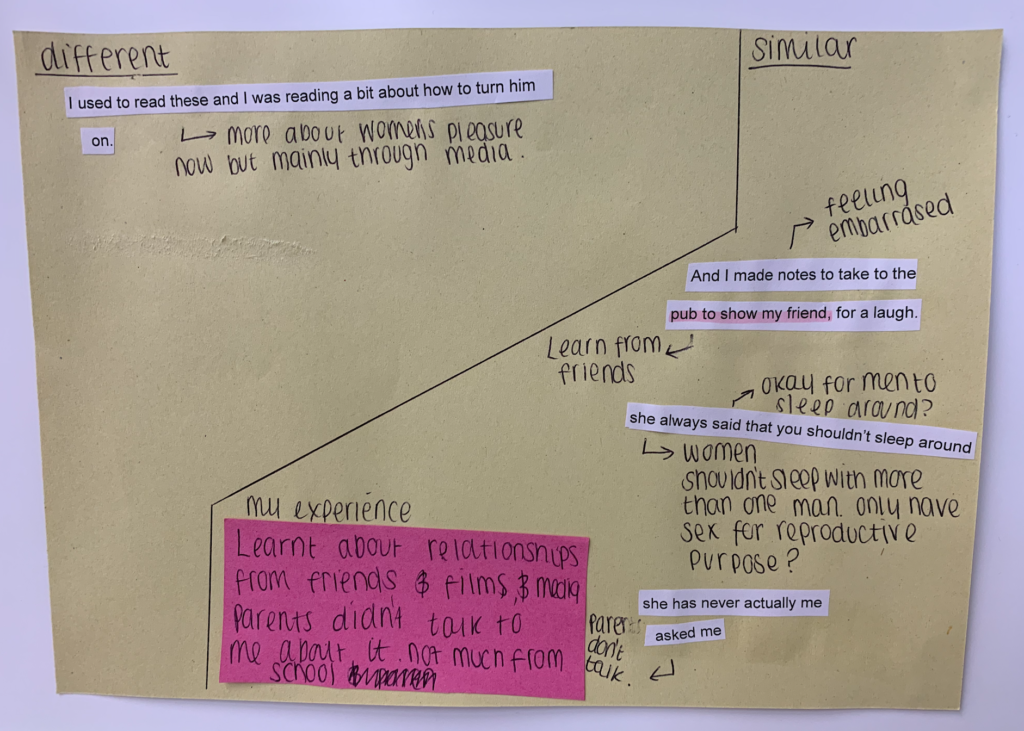
Others in the group talked about other ways in which young people learn through the media. For example, through documentaries and YouTubers. One young person gave the example of Stacey Douley’s documentary about brothels in Turkey where men visit sex workers because they don’t know where to put their penis when having penetrative sex with a woman. Here the sex workers are the sex educators. Shan Boody [Shan Boodram) was mentioned as a YouTuber that some young people watch.
The group reflected that now there is so much more media to learn from – particularly from social media. This can be a pressure but it is an important source of information. For some this is their only source (see above). There is more about female pleasure in the media now and so many more sources than previously (just a few women’s magazines). Porn is a source of education now for some young people.
Religion remains influential and important to how young people learn about sex, sexuality and relationships. Young people felt that things are changing within many faith communities, even though it can be hard to see this. One group said that a sexual health worker had started to come to their Mosque after lots of men started getting STIs from the extra-marital relationships they were having. The young women said that these men can’t talk to the Imam about these relationships or about condom use as the men shouldn’t be having these relationships in the first place.
After the session Jayne spoke with the students and asked them for feedback. She found that students had taken things away from the session for themselves and for their practice as future childcare / youth practitioners. In particular, the importance of access to information about sex and sexual health and the need to not be judgemental and understand difference. Students commented a lot on the creative methods we used, noting that they didn’t feel like they were taking part in research and rethinking what it means to do research with young people.
Six weeks later we returned to do another session using the WRAP data, this time exploring what we find in an archive and what we find missing. The students drew their ‘many selves’ and looked through the archive to think about what stories about women’s lives they wanted to be heard by future generations. Then some of them gifted us stories of their own.
‘The effects of both the sessions were felt throughout the rest of the time I worked with them and after that. Some of them told me that it had really helped to think more about it all and to be in a space where they felt that they could explore different views. It seemed to give them much more confidence in their ability to talk about issues and to feel taken seriously in their feelings and discussions was really important. Several said that they had previously thought about RSE as quite a narrow subject where they now thought that it was much wider and much more important for all ages than they had thought.’
Jayne Mugglestone, Lecturer and youth worker
Click here to explore the archive further and to use the selected extracts on sexual learning use the link above.
